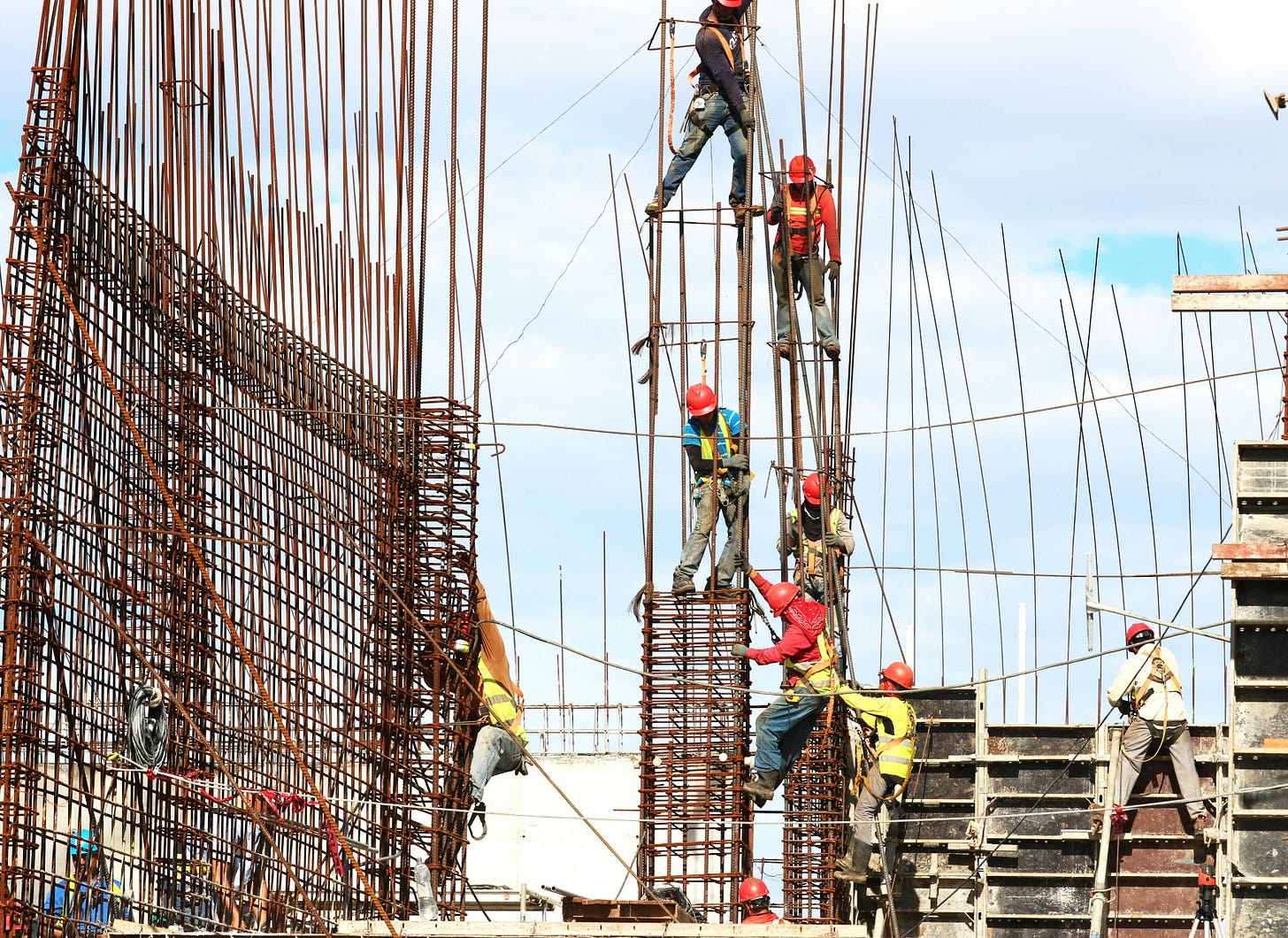Decarbonization strategies for cities of sufficiency

Reflections from the University of Toronto’s Embodied Greenhouse Gas Symposium.
As of 2023, about 57 percent of our global population lives in cities. This figure has been steadily increasing in recent history and will continue to rise, especially in low and middle income countries. In 1990, 2.28 billion people lived in urban environments. Today, that figure is now 4.61 billion.
But just because more people are living in cities does not mean that our cities are becoming more liveable. In an age of polycrisis, cities are grappling with issues like skyrocketing housing prices precipitated by the financialization of housing and overdose epidemics instigated by unsafe drug supply and grossly inadequate public health measures. While global cities face these challenges in meeting basic human needs of their citizens, they bear the responsibility of addressing planetary overshoot by reducing their emissions, as well as conserving and restoring natural ecosystems.
Meeting the needs of all people while staying within planetary boundaries calls for a new urban paradigm: cities of sufficiency. Cities of sufficiency should respond to calls from the United Nations and other global experts to move beyond GDP and other macroeconomic indicators as metrics of local growth and development and instead reorient towards wellbeing as the primary objective of economic activity and the standard measure of local progress.
Recently, the School of Cities at the University of Toronto hosted the Embodied Greenhouse Gas Symposium, where researchers and professionals discussed various strategies for decarbonizing the built environment, with an emphasis on embodied carbon. From environmental product declarations in retrofit components to slab thickness in new construction, the forum hosted a wide variety of researchers with diverse embodied carbon expertise. Decarbonization has a narrow focus on decoupling economic activity from carbon emissions, so while all embodied carbon interventions cannot be expected to advance broader sufficiency objectives, there were several innovative pieces of research presented at this symposium that display promise for advancing cities of sufficiency. Below, four key decarbonization strategies presented by researchers at the Embodied Greenhouse Gas Symposium with explicit relevance for cities of sufficiency will be discussed.
New Buildings, Done Right
New construction is a significant contributor to global greenhouse gas emissions. As living standards increase around the world and as more individuals migrate to cities, these carbon intensive activities are unavoidable… right?
Not according to four researchers based at the Centre for the Sustainable Built Environment. In a scan of 1000 global cities, researchers found that construction activities alone could overshoot climate targets by 2030 for a great number of localities. The solution, they advise, is to do new buildings right. By shifting to best practices like timber construction and high density development, carbon intensity declines dramatically. In addition to the ecological benefits of these decarbonization best practices, they can also advance social wellbeing priorities like affordability and placemaking.
Not Building Up, Not Building Out… But Adding On
Another set of researchers provided an alternative to new construction: adding new units to existing single family buildings. An analysis of building permit data in six North American municipalities found that carbon intensity was, on average, much lower for units added to existing buildings through renovations, compared to newly built units. This approach to new development has similar social and ecological benefits to the general decarbonization of new construction, with one critical additional benefit: the potential to mitigate urban sprawl and preserve critical ecosystems by increasing the intensity of existing urban space, rather than encroaching upon previously undeveloped land. These conservation benefits present additional health benefits to urban residents and can also precipitate healthcare savings.
Deconstructing, Not Demolishing
While doing new construction well is critical, addressing existing buildings in a manner that promotes sufficiency is equally, if not more, important. After all, 80% of buildings standing today will be around in 30 years! As we retrofit existing buildings to improve energy efficiency, climate resilience, and health outcomes, it is critical that construction waste is managed in an appropriate manner.
Ouroboros Deconstruction in Toronto gives us an opportunity to manage construction waste right by recovering building materials to promote circularity in the construction industry. In addition to decarbonization benefits associated with reclaiming reusable materials, their work brings about a host of other benefits to the local community compared to standard demolition, including reducing airborne pollutants that may adversely impact human health, supporting a circular economy, and stimulating job growth.
Placemaking to Increase Community and Decrease Emissions
While managing our physical assets is a critical tool for decarbonization, it begs the question: can embodied emissions be influenced by more than physical infrastructure? Tamar Meshulam and Dr. Soshanna Saxe posed this question to summit attendees. In Meshulam’s proposed research, they aim to explore how social infrastructure like public spaces and places of worship can shape embodied carbon for nearby residential buildings.
For instance, with the introduction of nearby third spaces like cafes and parks, how might the need for square footage per unit change? What about communal facilities? In addition to potential ecological benefits, these sorts of social infrastructure build community and nurture physical, mental and spiritual well-being.
To move towards cities of sufficiency, we need to build more: build more low carbon homes, build more innovative deconstruction practices for retrofitting existing buildings, and most of all, we need to build more community. Researchers at the Embodied Greenhouse Gas Symposium masterfully highlighted strategies to make our cities healthier and happier places to live. Now it's up to us to execute them.
The views expressed in this article are solely those of the author and do not reflect that of their employer(s).


